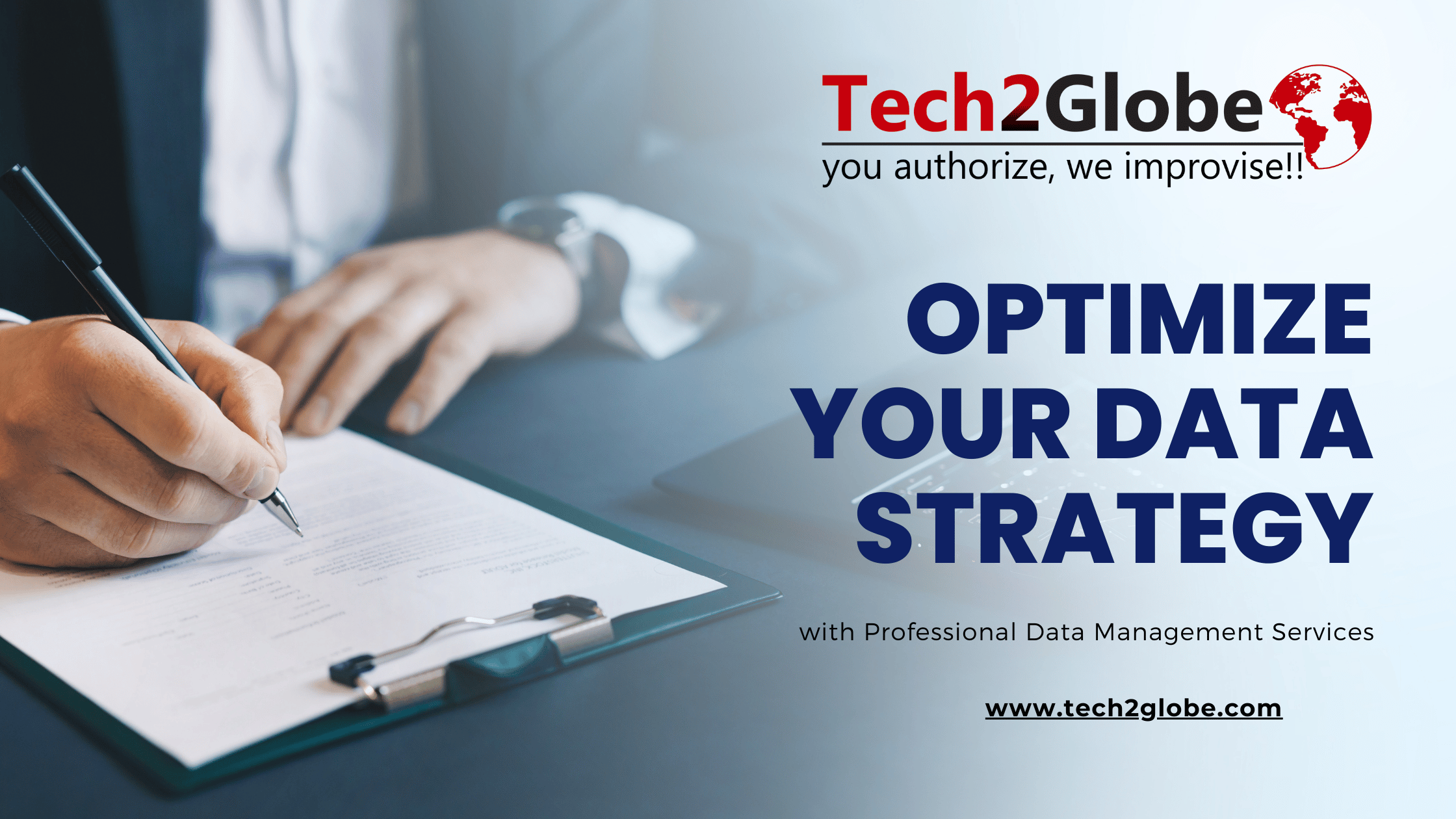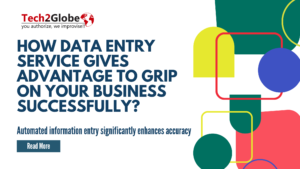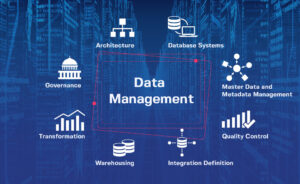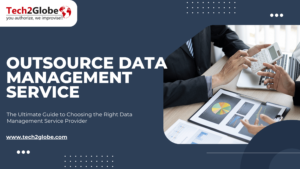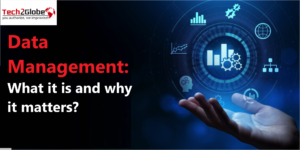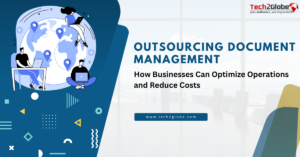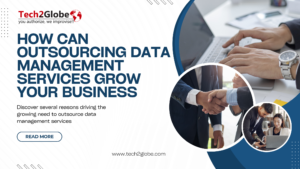Summary: Behind every successful data management initiative lies an excellent data strategy. This blog explores tips for optimizing data management with examples. Also, discover how expert information management services can enhance accuracy and efficiency.
Key Takeaways
- You don’t have to worry about internal costs and training when outsourcing data management services. Instead, you can focus on keeping your data organized and safe.
- Setting clear goals that align with company goals is integral to implementing a data strategy well.
- Monitoring KPIs and their effects on the business ensures that things are always getting better and aligned with strategic goals.
Imagine being in charge of a ship across a vast ocean with no map or compass to help you. It can feel like that when running a business without a data strategy. You might feel lost and unsure of the direction to take.
As a leading data management company, Tech2Globe knows that data is more than just numbers on a page. It’s critical for making astute company choices. We can guide you through the maze of information – from gathering it to storing it securely and, most importantly, making good use of it – thanks to our experience in integrated solutions.
Let us study together what a data strategy is and how keeping track of your data can help your company.
What are Data Management Services?
Data Management services cater to the need of organizing, storing, and maintaining data efficiently. Also, by outsourcing these services, you take the burden of in-house costs and training out of your head. Moreover, you get the time to work on other tasks while a professional manages your data and optimizes your strategy, ensuring accuracy.
What is Data Strategy?
A data strategy is a plan that outlines how an organization should manage and use data assets to make decisions. It includes the technology, processes, and people involved in data management. Generally, data strategy involves rules and guidelines to handle data.
Best Practices for Developing a Data Management Strategy
Define Clear Objectives: Developing a good data strategy starts with clearly defining your goals for your approach. Moreover, a successful data strategy and efficient application of it depend on matching your general company goals with these objectives.
To begin with, recognize the main limitations and factors that influence your company. For example, consider your finances along with the capabilities and expertise of your current employees. This can assist in identifying which parts of your data strategy are possible for your company.
In addition, to accomplish specific goals as specified in your data strategy, you might have to invest in higher-tier services or bring an expert proficient in a particular coding language on board.
Link Data Sources: As the organization has grown, data management has become decentralized without a management strategy, making it a nightmare.
Thus, standardize data architecture and connect disparate systems. Once you do this, taking business ownership of data management and aligning data use with business strategy is more accessible.
Organizations with fragmented legacy systems face insurmountable data retrieval and use gaps. Due to their inability to disclose how and where their data was obtained, they risk non-compliance with new regulations.
You can link, replace, or combine your systems. Most importantly, your data systems should support your business strategy. Second, they should provide data coherence, visibility, deduplication, and archive technologies to protect more while storing less. Lastly, it must be adaptable to future growth.
Outline your Data Delivery Plan: Once your data is under control, what structure and delivery method would best maximize business use? This is important if your business runs several ERP, CRM, and e-commerce systems.
Data delivery is bringing pertinent information into the correct systems and hands. The GDPR and other data privacy rules call for accurate reporting. Moreover, businesses have to reveal their data acquisition, management, and protection policies.
Systems that let users make data-driven business decisions—that is, ones using customer data reports to enhance current products and develop new ones to satisfy consumer needs—are what you need. Additionally, systems using sustainability data process management to reach and measure organizational goals are essential.
Data Infrastructure and Technology: First, people and culture drive a successful data strategy, but the right tools and technologies enable data management. Therefore, your tools and technologies should support your data strategy goals and business ecosystem.
Furthermore, a good data strategy considers a company’s technical debt—outdated servers, systems, and technology that could pose a risk. Consequently, the plan should detail how the business will incrementally update systems, considering budget projections and financial growth.
Adopt Uniform Guidelines for Data Governance:
Consider a company that heavily uses customer data for marketing. For instance, they track demographics, purchases, and website behavior. However, this valuable data could be scattered, inconsistent, or inaccurate without a data governance framework. Imagine a filing cabinet full of unorganized customer cards.
To address this issue, a data governance framework solves it. Think of it as clear customer data filing guidelines. Specifically, it assigns responsibilities for data accuracy (like a “data filing clerk”), sets security standards (to prevent unauthorized access), and ensures everyone can easily access the information they need.
Additionally, a company needs skilled data analysts and a strong data governance team. Moreover, you need customer data experts who can organize it.
How to Measure the Success of Data Strategy?
Want to maximize the information you have? The secret is to monitor how successful your initiatives in data management are. Monitoring important business metrics, including key performance indicators (KPIs), helps a data management company to enhance its data strategy and reach its general objectives constantly.
Accuracy and quality of data: Inaccurate data can generate false information that harms your company. Conversely, effective data management relies on verifying and validating your data sets.
Data Consumption: How frequently do users of your data access and apply it? Monitoring this helps you appreciate how dependent on data your team is and how it generally supports improved corporate decision-making.
Compliance with Laws. Like GDPR is ensured by regular audits of your security policies, data collecting methods, and data asset use.
Business Impact: Track how your method of data governance influences daily operations and corporate results. This could call for anything from better client experiences to more income.
Data Strategy Tools
Professional data management services employ advanced tools to ensure that every strategy is efficient, maximizing the value and accuracy of your data. What are these advanced tools? Let’s learn about them:
- Tableau: Data scientists can do more with Tableau than just show numbers. It lets them put together different graphs and charts to tell a clear story. Plus, it helps break down barriers to information in your company by letting everyone see data.
- Power BI: Businesses that want to get the most out of their data will love Power BI. It cuts right through the complex parts of data analysis so that you can find those valuable pieces of information faster and with less effort. Through the information it provides, you can make clear information reports that can help everyone in your organization make decisions based on data.
- Google Analytics: With its sophisticated analytics to grasp consumer behavior and enhance business decisions, Google Analytics 4 (GA4) is essential for data strategy. It guarantees businesses can use their data for more business impact.
- Informatica: By means of more timely, accurate, complete, accessible, useful, and valuable data, Informatica advances our objective of reusability. That enables us to follow industry standards, increase data openness, lower fines’ risk, and so protect privacy and security.
- TensorFlow: TensorFlow is an open-source platform for machine learning that uses data flow graphs. It is used a lot by data scientists, software developers, and teachers. In a graph, the nodes are the mathematical operations, and the edges are the tensors, which are multidimensional data arrays that flow between them.
Conclusion
Of course, figuring out how to make a data strategy for your business can be hard. There’s a lot on your plate right now, but you know you need to plan for the future.
You can do both better with a strong data strategy! Without a doubt, companies that can change quickly will succeed. You can stay successful now and be ready for what comes next with a good data plan that gives you the information you need to make intelligent choices on the go.
Need some help getting your data strategy off the ground? We have professionals here to help you through the process. We can also help you with our ecommerce product data entry services so you can focus on running your business.

Sarabjeet Singh is the Vice President of Operations at Tech2Globe and brings over 15 years of experience in various industries, including IoT, education, retail, government, FMCG, hospitality, and e-commerce. His leadership focuses on operational excellence and exceeding customer expectations, implementing contemporary solutions. Sarabjeet’s expertise spans e-commerce consulting, software development, data management, BPO/KPO support services, digital marketing, graphics, and startup consulting. He fosters a collaborative work environment, ensuring Tech2Globe delivers high-quality solutions.




